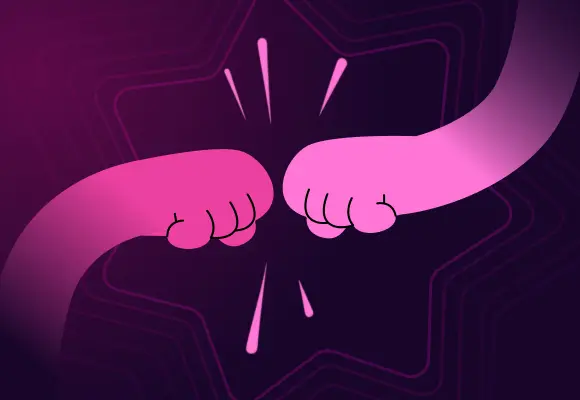
Is your brand still trying to do everything alone? Bad idea. Even Batman needs Robin—and the biggest brands in the world never go solo. In a market where attention lasts less than a badly edited reel, co-branding has become the perfect play for brands that want to stand out without shouting.
But what exactly is co-branding? It’s when two brands join forces to create something new—with purpose and personality. It’s not just about slapping two logos on a box or sharing an ad campaign. It’s about combining audiences, emotions, reputations, and styles to craft an experience that neither could achieve alone.
The beauty of co-branding is that it’s not always about selling. Sometimes, it’s a way to reposition a brand, reach a new audience, or connect with a different generation. It’s collaboration, but with strategy. When done right, each brand brings its own magic—one adds heritage, the other adds freshness; one brings the community, the other the aesthetic. Together, they create something that doesn’t just look good—it feels real.
Types of co-branding
Co-branding isn’t a one-size-fits-all formula. There are several ways to do it, and each one follows its own rules. Some focus on the product, others on the experience, and others on communication strategy. It all depends on your goals.
Product co-branding
This is the most common (and visible) form. Two brands come together to create something new—a special edition or a product that combines both identities. It’s the type of co-branding that often goes viral because it merges the best of two worlds. Plus, it sparks organic buzz and makes consumers feel like they’re experiencing something exclusive.
Communication co-branding
Here, brands don’t necessarily create a new product, but they communicate together. They share campaigns, messages, or causes, and leverage each other’s reach to amplify their voice. It’s a powerful way to reinforce values, attract new audiences, and build brand positioning without changing the product offering.
Sponsorship co-branding
In this case, brands unite to support an event, artist, or initiative. The focus isn’t on the product—it’s on association. It’s about connecting emotionally with people by showing shared interests that go beyond consumption.

Distribution co-branding
This type happens when one brand opens its channels or points of sale to another. It’s a smart move that helps expand presence, reach new markets, and increase visibility without heavy investments. The key here is synergy: both brands benefit and gain exposure through collaboration.
Co-branding examples in Colombia
Now let’s move from theory to practice. Because co-branding doesn’t live in marketing textbooks—it lives on the streets, in packaging, on social media, and in seasonal combos. These examples prove that when collaboration is done right, it becomes part of pop culture:
- Frisby and Ruby Rose: the country’s most beloved fried chicken chain teamed up with a makeup brand to celebrate authenticity and confidence. An unexpected yet brilliant partnership that blended flavor and style while breaking industry stereotypes.
- Chocoramo and McDonald’s: a Colombian classic meets a global icon. The result: a McFlurry with Chocoramo chunks that sparked nostalgia, long lines, and thousands of social posts. The perfect mix of local and international.
- Bombombum and Postobón: the childhood candy turned drink. A fun, nostalgic move that tapped into emotional memory and showed that co-branding can also be playful, lighthearted, and completely unexpected.

Related article: Pop culture and marketing: the bridge between trends and consumer connection
Behind each of these collaborations is one thing in common: authenticity. The brands didn’t fake a connection—they truly shared values, audiences, or emotions. That’s why it worked. The public saw it as a genuine collaboration, an alliance that sparked conversation, desire, and affection.
Why co-branding works (when it’s done smart)
Co-branding works because it creates emotional connection. When two brands align under a shared and coherent purpose, the audience feels it’s authentic—not just a marketing stunt. That honesty shows, spreads, and builds trust.
It also multiplies reach without doubling the effort. Two brands, two communities, two creative teams, and two budgets that work together instead of competing. In today’s noisy landscape, that’s a massive advantage.
But it’s not all smooth sailing. If a collaboration feels forced, the audience will notice instantly. Co-branding only works when both brands have something to gain, something to give, and a story worth telling together. Otherwise, it’s just an expensive experiment with no soul.
How to know if your brand is ready for co-branding
Before rushing to find your brand partner, take a moment to look inward. Ask yourself if your brand already has a solid identity—if you know who you’re talking to and what real value you bring. Co-branding isn’t an emergency strategy; it’s a move that needs thought and purpose.
Ask yourself these three questions:
1. Do we share values, or are we just chasing views?
2. Does this partnership bring real value to my audience—or just to my ego?
3. Will the result feel natural—or like a desperate marketing attempt?
If you answered “yes” to all three, you’re in a great place. But if you’re unsure, it’s better to keep building your brand identity before blending it with another. Because co-branding doesn’t hide weaknesses—it magnifies them.
Tuatara – Digital Marketing Agency
At Tuatara, we believe co-branding isn’t about mixing logos—it’s about mixing purposes. We design strategies where alliances aren’t improvised; they’re built with intention, analysis, and creativity.
Our approach blends data, strategy, and storytelling so every collaboration drives real impact—in perception, positioning, and results.
If your brand is ready to stop working solo and start creating collaborative impact, let’s talk.

Deja tu comentario
los campos obligatorios están marcados con *
Comentarios
×Deja tu comentario
los campos obligatorios están marcados con *